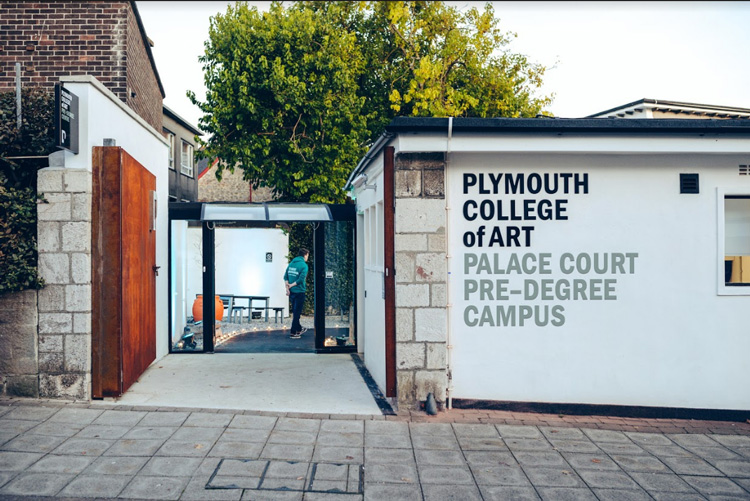Direct consumer plus-size brand Universal Standard has just decided to offer a new launch entitled Universal Fit Liberty (UFL). The fresh program includes revolutionizing the shopping experience by allowing a size swap for customers.
The idea came from the body positive message of Universal Standard. As women of all sizes have fluctuating weights and experience emotional burdens of replacing clothes because of it, Universal Standard has come up with a unique solution.
Universal Standard has confirmed that if clothes you bought from the brand’s core collection no longer fit due to “size fluctuation within a year of purchase,” the brand will replace them in a new size for free, according to a statement released by the company. This will be the first program of its kind to offer this type of swap in the apparel industry. With Universal Fit Liberty’s introduction on April 17, any purchased U.S. pieces can be replaced without any worry or hassle. “Whether you’re a size 6, 16, or 26, weight fluctuates. It can go up and down, creating not only an emotional rollercoaster, but a financial burden,” the brand states on its website.
Universal Standard launches first-ever size swap for women's clothing
The returned clothing will be laundered and then donated. Universal Standard will donate these clothes to charities that support women in need including Dress for Success, American Red Cross and others. These clothes are meant to help make a difference in the apparel industry. “As a brand, we intend to create real, lasting, and much-needed change in the fashion business - particularly the 10+ segment, which still sits on the wrong side of an arbitrary size line, and segregates 100mn American women from their peers," co-founder and creative director Alexandra Waldman said in a statement.Founders Waldman and Polina Veksler created the elevated chic brand in 2015 to offer women’s clothing from sizes 10-28. Using a direct-to-consumer model, the brand offers new products weekly and retails season-less clothes that retail from 60 to 160 dollars. With the new launch of UFL, Universal Standard is planning to take its clothes to the next level by empathizing with women and their needs with fluctuating weights. "Our goal with UFL is to lead this sector with big, bold innovations based on insight and a deep understanding of our customers' needs,” Waldman stated.
Sara Ehlers


 It was a courtesy meeting with Bizzarri that started the course of Michele
being appointed creative director. He had already seen two well-known
designers, but it was Michele, with his near archive knowledge of the house
and passion for the brand, that led to him being given an assignment to
come up with a men's collection in just five days. Two years later and it
is fair to say Michele has transformed Gucci both aesthetically and
profitably, and brands are looking toward Gucci to emulate its success.
It was a courtesy meeting with Bizzarri that started the course of Michele
being appointed creative director. He had already seen two well-known
designers, but it was Michele, with his near archive knowledge of the house
and passion for the brand, that led to him being given an assignment to
come up with a men's collection in just five days. Two years later and it
is fair to say Michele has transformed Gucci both aesthetically and
profitably, and brands are looking toward Gucci to emulate its success.
 While Obama might argue the idea of a uniform is liberating, there might
be something else at work with our designers, as Giorgio Armani explains to
The Guardian, “When I look at myself in the mirror, I am
super-critical. I have to think of what I can wear that will look good on
me. I can't wear stripes or bright colours because they make me expand. I
like to wear navy trousers with a white T-shirt from Emporio Armani during
the day, with white trainers. For evening, I wear black velvet dinner
jackets and handmade shirts from Giorgio Armani, hand-made to measure. I
almost always wear the same thing. I have an athletic body but am only 1m
70cm tall, sadly, and I know what suits me best.”
While Obama might argue the idea of a uniform is liberating, there might
be something else at work with our designers, as Giorgio Armani explains to
The Guardian, “When I look at myself in the mirror, I am
super-critical. I have to think of what I can wear that will look good on
me. I can't wear stripes or bright colours because they make me expand. I
like to wear navy trousers with a white T-shirt from Emporio Armani during
the day, with white trainers. For evening, I wear black velvet dinner
jackets and handmade shirts from Giorgio Armani, hand-made to measure. I
almost always wear the same thing. I have an athletic body but am only 1m
70cm tall, sadly, and I know what suits me best.”  But uniform dressing is not just for the male designers. Carolina
Herrera’s white shirt with popped collar and monochrome skirt, Diane Von
Furstenberg’s printed tunic, Donna Karan’s voluminous black with statement
necklace, Miuccia Prada’s knee-length pleated skirt and blouse.
But uniform dressing is not just for the male designers. Carolina
Herrera’s white shirt with popped collar and monochrome skirt, Diane Von
Furstenberg’s printed tunic, Donna Karan’s voluminous black with statement
necklace, Miuccia Prada’s knee-length pleated skirt and blouse.